Headaches and Posture
To download a copy of this week’s newsletter, please click here.
Houston Area Chiropractor Comments: Have you ever glanced at your reflection in a storefront window or mirror as you walked by and noticed your posture? Scary, isn’t it? We all know that we should stand up straight but we soon forget when we get busy and stop thinking about it.
Poor posture is often due to years of standing slouched and this bad “habit” usually starts at a young age. Just look around when you’re in an airport or shopping mall and notice the many people 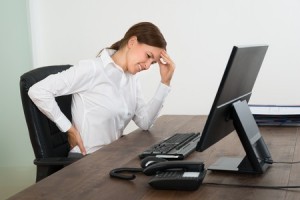 have poor posture. In fact, people’s posture may reflect their attitude – if they’re happy, sad or depressed. Poor posture may be related to self-consciousness, especially during adolescence. It is also genetic as we frequently see a “trait” throughout family members with similar postural tendencies.
have poor posture. In fact, people’s posture may reflect their attitude – if they’re happy, sad or depressed. Poor posture may be related to self-consciousness, especially during adolescence. It is also genetic as we frequently see a “trait” throughout family members with similar postural tendencies.
The most common postural fault associated with headaches is the forward based head and shoulders. From the side, it appears that the head is significantly forward relative to the shoulders, the upper back is rounded forward and the shoulders are rolled forwards and rotated inward. One exercise that helps reduce this postural bad habit is tucking in the chin and pretending a book is balancing on top of the head. The objective is to not allow the book to slide forward off your head and land on your toes!
It takes approximately 3 months of CONSTANT self-reminding before the new “good habit” posture becomes automatic, so be patient. Soon you’ll “catch yourself doing it right” without thinking about it.
Frequently, posture is faulty lower down the “kinetic chain.” The first link of the chain is the feet and the last link is the head. Since we stand on two feet, any change in that first link or the feet, can alter the rest of the chain, especially areas furthest away – the head, resulting in headaches. For example, if one leg is short, the pelvis drops, the spine shifts (scoliosis), the shoulder drops and the head shifts trying to keep the eyes level. A short leg usually needs to be managed with a heel lift, an arch support or combination of both to properly treat the headache patient.
Most health care providers EXCEPT Chiropractic Physicians typically ignore these issues. Chiropractic Doctors are specifically trained to analyze posture and correct it. You can depend on our clinic for up-to-date treatment approaches such as these.
Dr. Ward Beecher practices at Beecher Chiropractic Clinic at 1001 Pineloch, Ste 700 Houston, TX 77062. You can schedule an appointment at BeecherChiropractic.com or by calling (281) 286-1300. If you have any questions regarding this blog, please comment below!
Headaches and Different Management Options
To download a copy of this newsletter, please click here.
Houston Chiropractor Comments: Headaches are one of the more common conditions that enter the offices of primary care physicians, including chiropractors. The standard medical treatment revolves around the use of medications and/or injections. The standard chiropractic treatment approach includes manual therapies that may include spinal manipulation or adjustments, manual or mechanical cervical traction, mobilization techniques, trigger point therapy, physical agents or modalities such as electrical stimulation, ultrasound, etc., and nutritional counseling. While both approaches have their pros and cons, there are far less side effects associated with the chiropractic treatment option.
Headaches can generally be classified as primary or secondary. Primary Headaches include Migraine, Tension, and Cluster. Secondary headaches occur because another condition or injury is present such as after a car accident or slip and fall injury, due an infection, a sinus, jaw, and/or dental condition, a vascular injury such as stroke, a medication side effect, psychiatric disorder and others.
Treatment for patients with headaches is dependent on the cause. Choosing a type of health care service for the treatment of headache can be a difficult choice. When considering the use of complementary and alternative medical approaches available to patients with chronic tension-type headaches, a recent report revealed that 40% of 110 patients surveyed utilized some form of an alternative/complementary medical approach. The most frequently utilized was chiropractic (21.9%), followed by acupuncture (17.8%), and massage therapy (17.8%).
If you find yourself frequently utilizing over-the-counter medications such as an anti-inflammatory drugs (ibuprofen: Advil, Nuprin; Naprosyn such as Aleve) or Tylenol, it is probable that the chiropractic management approach will benefit your headache condition.
Frequently, in patients with headaches, the vertebrae in the upper neck lose their normal range of motion and the muscles in that region that attach to the base of the skull become overly tight and squeeze or compress the nerves that feed into the head. This results in radiating pain over the top or around the head, sometimes into the eyes. Chiropractic care can make it easier for you to move your head and neck forwards, back, rotate or twist, and side bend. This, in turn reduces the muscle tension and nerve pinching, which reduces headache pain.
Dr. Ward Beecher practices at Beecher Chiropractic Clinic at 1001 Pineloch, Ste 700 Houston, TX 77062. You can schedule an appointment at BeecherChiropractic.com or by calling (281) 286-1300. If you have any questions regarding this blog, please comment below!
Best Sexual Positions for Back Pain
 Clear Lake Chiropractor Comments: Back pain isn’t just one of the most common reasons for people to miss work; it can also affect your sex life. But new guidelines based on how the spine moves during intercourse could help. A frequently asked question is “How can I have sex without causing further damage or pain to myself or my partner?” People are sometimes embarrassed to ask the question, but it is information that they need.
Clear Lake Chiropractor Comments: Back pain isn’t just one of the most common reasons for people to miss work; it can also affect your sex life. But new guidelines based on how the spine moves during intercourse could help. A frequently asked question is “How can I have sex without causing further damage or pain to myself or my partner?” People are sometimes embarrassed to ask the question, but it is information that they need.
First, people need to understand that there is an emotional aspect to back pain. Back pain can cause stress. The partner who does not have back pain can have a lack of understanding and perceive the stress and reluctance to have sex as a personal rejection and/or resentment. Research has shown to taking it slow and being patient is beneficial. Start off with a light massage, shower or even just gently rubbing in a soothing pain lotion to help loosen the muscles.
Back pain affects 8 out of 10 people at some point in their lives, and low back pain is the main reason for disability. Regarding sex, doctors used to recommend the spooning position for people with back pain, despite a lack of scientific evidence to support it. Also, a sex position that’s appropriate for one type of pain, might not work for another type of pain.
For men who have an increase in pain while bending forward or after sitting for a period of time, the best positions will be a modified “doggy-style” position while their partner supports their weight on either their hands or elbows. If pain is increased by flexion and motion, then a modified “missionary” position is suggested where the man supports his weight on his hands and his partner flexes their hips and knees. If extension causes back pain, it is suggested that this position is modified so that his weight is supported on his elbows. Another position that is suggested for men with extension related pain is the side position or “spooning”. This will help to minimize the pain from extension and minimize the weight bearing.
For women who have an increase in pain when they sit too long or flex forward to touch their toes the best position are ones that minimize spinal flexion like spooning or “doggy-style” with their weight supported on their hands or elbows. If the pain is increased with extension or arching their back then the best position is a modified “missionary” position with their hips and knees flexed.
The good news is that healthy sexual relations will help to minimize stress which ultimately helps to reduce back pain.
Dr. Ward Beecher practices at Beecher Chiropractic Clinic at 1001 Pineloch, Ste 700 Houston, TX 77062. You can schedule an appointment at BeecherChiropractic.com or by calling (281) 286-1300. If you have any questions regarding this blog, please comment below!
Did You Know This About Low Back Pain?
To download a copy of this newsletter, please click here.
Clear Lake Chiropractor Comments: If you have low back pain (LBP), you are certainly not alone. Almost everyone at some point has back pain that interferes with work, daily activities, and/or recreation. Americans spend at least $50 billion each year on LBP. It is the most common cause of job-related disability and a leading contributor to lost work time. Back pain is second to headaches as the most common neurological condition in the United States. Fortunately, most occurrences of LBP go away within a few days. Others take much longer to resolve or lead to more serious conditions (1).
There are two types of low back pain – acute and chronic. Most episodes of acute LBP last from a few days to weeks, are not neurological and usually do not carry a high level of surgical risk. The 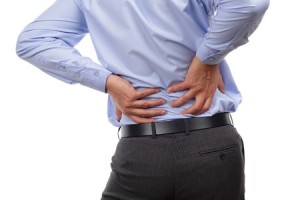 cause of LBP can be difficult to isolate because often, while the cause is cumulative where multiple events over time, the last activity the patient recalls is “bending over for a pencil.” This, by itself is not likely to cause an acute onset of LBP. Low back pain can be caused by trauma such as sports injuries, work around the house such as garden work, car accidents, and others. Chronic low back pain, by definition, is LBP that lasts more than 3 months and the cause can be more difficult to identify and is often cumulative and superimposed on a prior condition such as degenerative disk or joint disease. A real problem is the rate of recurrence or, chronic, recurrent low back pain where pain may subside but returns at various rates of frequency and duration. This category affects a high percentage of the population and represents the true challenge in spine care management.
cause of LBP can be difficult to isolate because often, while the cause is cumulative where multiple events over time, the last activity the patient recalls is “bending over for a pencil.” This, by itself is not likely to cause an acute onset of LBP. Low back pain can be caused by trauma such as sports injuries, work around the house such as garden work, car accidents, and others. Chronic low back pain, by definition, is LBP that lasts more than 3 months and the cause can be more difficult to identify and is often cumulative and superimposed on a prior condition such as degenerative disk or joint disease. A real problem is the rate of recurrence or, chronic, recurrent low back pain where pain may subside but returns at various rates of frequency and duration. This category affects a high percentage of the population and represents the true challenge in spine care management.
As people age, their bone strength and muscle stretch, strength and tone usually decreases due to lack of activity. When the disks begin to lose fluid and flexibility, their ability to cushion the vertebrae and function as “shock absorbers” also decreases. Disks can tear, bulge, and/or herniate which results in localized LBP and/or radiating pain that follows the course one or more of the 31 pairs of nerve roots (eg., “sciatica” down the back of the leg). Soft tissues such as joint capsules and ligaments lose their capacity to stretch and can tear more easily, resulting in a sprain or strain (muscle/tendon injury). Other conditions that either cause or contribute to LBP include arthritis, obesity, smoking, pregnancy, stress, poor posture and/or physical health, and can lead to unsatisfied patients if these co-contributors are not properly identified and discussed. Less commonly, LBP can be caused by a more serious condition such as cancer, fracture, infection, spinal cord compression, and various internal conditions (3). Emergency care may be indicated in these circumstances.
At Beecher Chiropractic, we will perform a complete examination, consider other contributing causes, and will treat the problem(s) causing the LBP condition. If needed, working with other allied health care providers will be arranged. Exercise, dietary recommendations, ergonomic or work modifications, spinal manipulation, and modalities will all be considered to help eliminate or control of the LBP. Methods of self-managing the LBP will be emphasized.
Dr. Ward Beecher practices at Beecher Chiropractic Clinic at 1001 Pineloch, Ste 700 Houston, TX 77062. You can schedule an appointment at BeecherChiropractic.com or by calling (281) 286-1300. If you have any questions regarding this blog, please comment below!
Carpal Tunnel Syndrome and Some of Its Causes
Clear Lake Chiropractor Comments: Research has shown certain work practices and risk factors, such as being overweight, can elevate your risk for developing carpal tunnel symptoms.
As a chiropractor, I often look to the spine when my patients have nerve pain. Many people with carpal tunnel syndrome have a history of a whiplash injury or other neck trauma. But how can a neck injury make me susceptible to carpal tunnel? Simple. When you sprain the ligaments in your neck, this can cause damage and inflammation, which can irritate a nerve where it exits the spinal cord and courses between tiny bones to eventually reach your hand. If the nerve is irritated at the neck region, then this makes it more vulnerable to compression as it passes through the wrist tunnel. Signs that your carpal tunnel pain is a neck problem include shoulder and neck pain and/or a history of a neck trauma.
How can this possibly be fixed “chiropractically”? The first step is to diagnose if you have a primary wrist or neck problem, or a problem with both areas. A thorough examination of the neck, 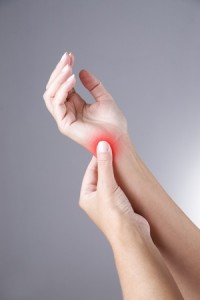 which may include x-rays, is important. The carpal bones of the wrist can be out of alignment or the vertebrae in the neck can be out of normal position. A specific adjustment can help to correct the abnormal posture and restore mobility.
which may include x-rays, is important. The carpal bones of the wrist can be out of alignment or the vertebrae in the neck can be out of normal position. A specific adjustment can help to correct the abnormal posture and restore mobility.
You may also need to do strengthening exercises, especially if the condition is long-standing or you’ve worn a brace. The muscles of the lower arm are integral to providing wrist support and optimum function
Contractures can develop over time as well, fixating the nerves and not allowing them to glide normally with movements. Deep tissue therapy such as “pin and stretch” and deep massage and break up knots and tight tissues or scarring.
With most patients, alignment is an issue, as is flexibility and strength. I consider the cause of most carpal tunnel symptoms to be multifactorial. Not one exercise, or one pill, or even one adjustment, is right for everyone. However, it’s important to consider conservative options first before deciding on invasive surgery. Even rest and taking pain pills is not really exploring all of the potentially conservative options available.
Dr. Ward Beecher practices at Beecher Chiropractic Clinic at 1001 Pineloch, Ste 700 Houston, TX 77062. You can schedule an appointment at BeecherChiropractic.com or by calling (281) 286-1300. If you have any questions regarding this blog, please comment below!
Minimizing Your Whiplash Risk
Houston Area Chiropractor Comments: While it is hard to prevent someone from crashing their car into your car, there are some things you can do to minimize whiplash injuries.
The first preventive measure is making sure your seat is upright and the head rest touches the top of your head. If there is a lot of distance between your head and the rest, it will do little to help in the event of a collision. Also, if the headrest is too low, in can act as fulcrum, leveraging your neck into a worse position, and increasing injury risk.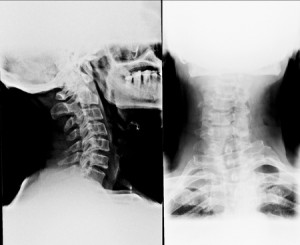
Another thing we can do minimize injury risk is being in the best possible shape prior to the trauma. Research has shown people with good aerobic fitness seem to be more resilient after whiplash accidents.
If you are aware you are about to be hit, it is probably best to remain in a neutral position with eyes facing forward. People with their head turned prior to impact seem to have worse ligament injuries.
If you can afford it, a larger car will lessen the momentum of your vehicle after a collision. There are now vehicles with whiplash-protection seats (e.g. Saab) that dampen the effects of rear end-accidents. Frontal collisions tend to be less severe to the neck if the speeds are equal because the chin can hit the chest preventing forward motion of the neck. Rear-end and side-impact collisions do not have this benefit.
Unfortunately, there are many simply unavoidable risk factors. Women and children seem to be more vulnerable, possibly because of the increased head to neck size ratio. Also if you’ve ever had a head or neck trauma before and or have a degenerated disk in the neck, these factors elevate your risk for a more pronounced injury. Other factors that can slow your recovery include wearing a neck brace/collar, taking to bed rest, or getting vertical traction treatments. Inhibiting movements can feel good initially but is not good in the long term because of decreased muscle function and strength. Getting diagnosed as soon as possible can determine the best course of action for getting you to back to a speedy recovery. Just letting things go is rarely a good solution.
Dr. Ward Beecher practices at Beecher Chiropractic Clinic at 1001 Pineloch, Ste 700 Houston, TX 77062. You can schedule an appointment at BeecherChiropractic.com or by calling (281) 286-1300. If you have any questions regarding this blog, please comment below!
Chiropractic Alternative to Back Surgery?
To download a copy of this week’s newsletter, please click here.
Clear Lake City Chiropractor Comments: A large-scale study from Great Britain has shown results that’ll make you wonder whether back surgery is always necessary (Bhattacharyya M. Does the risks and benefits of spinal manipulation in patients with low back pain as a nonsurgical approach translate into better outcomes in routine clinical care: a prospective observational cohort study. J Bone Joint Surg 2008;90B:Suppl.492.). One hundred two patients were followed while they waited to see a spinal surgeon. The patients had disc herniations confirmed by MRI and had sciatic/leg pain. They had also previously tried 4 weeks of medications (non steroidal anti-inflammatory drugs), which had provided no benefit.
While they waited to see the spinal surgeon, they were referred for manipulations provided by experienced chiropractors. The adjustments were given five days per week. 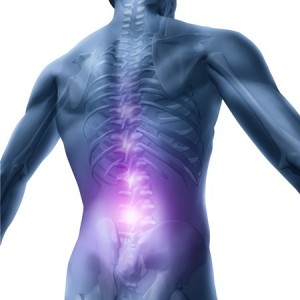
A few patients had some transient increase in pain and there were three treatment failures (out of 102). Overall the results were very encouraging with patients moved off of the surgery wait-list.
But how is this possible? The disks are the hard cartilage separating each vertebra in your lower back. When this ligament sprains it can bulge onto a nearby nerve, causing back pain or pain down your leg. Precise adjustments use the bones as levers to affect the alignment of these vertebrae and the movement of the joints in the lumbar spine. If alignment is improved, then there is better posture and distribution of loads. When the mobility is more symmetrical, this also may prevent unequal loading of the soft tissues. Helping these mechanical aspects to heal can be enough to lessen your pain and help you to regain your quality of life. In some cases, it seems it may even keep you from a potentially unnecessary back operation.
Based on the results of the study, anyone without need of emergency surgery should try chiropractic care before having an elective operation for a disk or sciatica/leg pain disorder. Emergency problems would be symptoms like bowel and bladder dysfunction and numbness over the tailbone or hips. Most patients do not fit into the emergency-surgery camp.
Dr. Ward Beecher practices at Beecher Chiropractic Clinic at 1001 Pineloch, Ste 700 Houston, TX 77062. You can schedule an appointment at BeecherChiropractic.com or by calling (281) 286-1300. If you have any questions regarding this blog, please comment below!
Different Types of Headaches and Chiropractic Care
To download a copy of this week’s newsletter, please click here.
Clear Lake City Chiropractor Comments: Adults may experience many different kinds of headaches. A primary headache is a headache that is not a part of another disease process. Secondary headaches can come from a poor eyeglass prescription, diabetes, the flu, or even a brain tumor. The most common primary headaches are tension-type, migraine, and cervicogenic (from the neck).
Tension type headaches feel like a tight band around your head. Stress seems to aggravate them and women tend to get this type of headache more frequently. Females are also more affected by
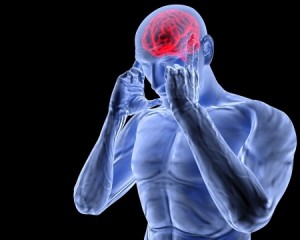
migraine headaches.
There are two types of migraine: classical and common. The classical migraine headache may start with nausea or sickness in the stomach and proceed to an intense throbbing pain on one side of the head. The common migraine lacks this nausea and is more common than the classical type.
In cervicogenic headache, neck function is prominently disturbed. In addition to neck pain, there are usually tight neck and shoulder muscles, and a limited range of motion.
Recent research has shown that the three above described headaches can also overlap with one another. In chiropractic, we look to the spine as an often-overlooked factor in headache treatment. By objectively analyzing spine function, the doctor will identify the joints that are restricted in their range of motion or show abnormal posture and alignment. Many patients on x-ray, or through external postural analysis from the side, can show forward head posture. This is where the neck seems to arise from the front of the chest rather than back over your shoulders. The head is very heavy and with this poor posture, the muscles at the back of the neck must contract to restrain this heavy load.
There isn’t one particular bone that is treated for these different types of headaches, the premise being that the headache is a symptom of another problem in the spine.
Chiropractic care has an excellent safety profile and several studies have shown that patents with headaches positively respond to chiropractic care without the side effects often seen with drug treatments. Chiropractic care is one of the most researched non-drug options available for patients. Unfortunately, many patients choose over-the-counter and prescription medications and don’t consider more natural approaches that may get at the cause of the condition rather than just its effects.
Dr. Ward Beecher practices his Houston Chiropractic Clinic at 1001 Pineloch, Ste 700 Houston, TX 77062. You can schedule an appointment by calling (281) 286-1300.
Your Neck is Your Life Line
Chiropractor in Clear Lake Comments: The nervous system is the master control network for your body, directing virtually every function and action, from monitoring your life needs, to precisely responding to threats to your health.
Each system, from your heart and blood vessels, to your digestive and immune systems, is directed through nerve impulses originating in your brain or spinal cord that travel through its protective bony structure: the spinal column.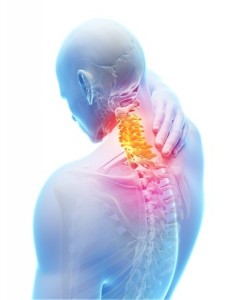
The neck region is the most vulnerable region of the spine to injury. Indeed, even death can be brought through significant trauma to the neck. When the trauma is not fatal, the consequences can still be severe, such as when paralysis strikes.
Most people will not experience these severe injuries, however sprains of the delicate ligaments with subluxation (misalignment) do commonly occur. Despite the injury being smaller, their location (the neck) makes their impact more profound. Functions throughout the body can be impaired when the nerves in the upper neck are compromised.
Within chiropractic, there are specialists who focus their entire care on the uppermost two vertebrae of the spine.
Because every nerve passes through the neck, if irritation or compression is present, virtually any system of the body can be affected. The point being is that a neck disorder will not necessarily just cause neck pain or headache. Dizziness, digestive problems, fatigue, high blood pressure and generally reduced quality of life are some of the symptoms patients commonly experience.
If you have suffered a severe whiplash, you may have noticed far more than neck pain or a stiff neck. Indeed, recent research suggests whiplash needs to more thought of as a whole body disorder.
We take these injuries in our office and address them in both a specific and comprehensive manner. Most patients who have suffered a neck trauma will require x-rays to analyze the posture of their spine. X-rays may also need to be taken in motion to test the stability of your ligaments and to determine precise levels of impaired movements. Without this road map, it is difficult to determine how care should be directed and factors that could influence your long-term prognosis, such as degeneration.
Our health care team is dedicated to drugless natural methods to restore vitality. We try to work with your body with techniques that don’t carry the all too common side effects commonly seen with long-term drug use or surgery. If you’re suffering from neck pain in Houston, we will provide the relief you need and take steps to prevent further damage to your neck and spine.
Dr. Ward Beecher practices at Beecher Chiropractic Clinic at 1001 Pineloch, Ste 700 Houston, TX 77062. You can schedule an appointment with the best chiropractor in houston by calling (281) 286-1300. If you have any questions regarding this blog, please comment below!
Do You Really Need an X-Ray if You Have Back Pain?
Chiropractor Near Clear Lake City Comments: Most chiropractic patients have spine x-rays taken of their lumbar. Since x-rays do carry a very small risk of tissue damage, this risk needs to be outweighed by benefits. So, how are x-rays used in our clinic?
First, spine x-rays can tell us about medical conditions that may require referral to another health care provider such as a spine tumor or an infection. Fortunately, these diseases are very rare, but they do need to be considered in every patient, especially those who may have certain “red flags” such as back pain at night or rest, or if there is also a fever. In addition, certain severe traumas (like a fall) can produce fractures. In an older adult with osteoporosis, or someone taking steroid medications over years, even a minor trauma event can be enough to cause a break, because the bone is in a weakened condition.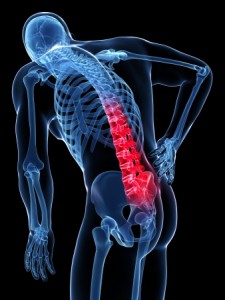
After these very rare conditions are ruled out, your x-rays can provide important information about your anatomy and physical posture. For example, curvatures of the lumbar spine, such as scoliosis, are virtually undetectable without a spine x-ray, and without these you would not know if you would need scoliosis treatment. If we know how your spine is deviated, this information can help direct the adjustment more specifically. Sometimes leg lengths are uneven and a person may require an orthotic (arch support) or heel lift to level the foundation for your spine. About one in ten patients will have an unequal leg length of a centimeter or more.
In terms of the bone anatomy, x-rays can show the planes and angles of the discs between bones and whether any degeneration is present or if you have any herniated discs. If the degeneration is advanced, then a natural bone fusion may be present. It should be obvious that if the spinal anatomy does not allow movement or if the joints are literally fused movement is impossible, then chiropractic adjustments are not appropriate.
Spine x-rays can also show us how one area of the spine mechanically compensates for a deviated area below. Sometimes, pain may be present at compensatory areas but without knowledge of the cause of this deviation, care may be less optimum. Just as the lumbar spine may compensate for a pelvic problem, so to can a neck condition be caused by abnormal postural lower down the spine. The x-rays can show us how case management needs to be altered to reflect your individual needs.
In any case, x-rays are important to reach an accurate diagnosis, which is the first step on the road to recovery and regaining your vitality and quality of life.
Dr. Ward Beecher practices at Beecher Chiropractic Clinic at 1001 Pineloch, Ste 700 Houston, TX 77062. You can schedule an appointment the best chiropractor in houston by calling (281) 286-1300. If you have any questions regarding this blog, please comment below!

